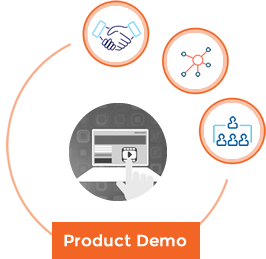Engineering, Procurement, and Construction (EPC) firms are actively shifting away from outdated, paper-based internal audit and adopting digital tools like ISO QMS software and audit management software to boost quality, reduce risks, and meet global compliance demands more efficiently. As projects grow in complexity, EPC leaders recognize that traditional methods can no longer keep up with today’s regulatory, operational, and customer expectations.
Internal Audit in EPC: The Digital Leap Towards Quality and Compliance
The internal audit function is undergoing a digital transition as EPC companies face growing pressure. They must complete high-quality projects on time and within budget.In a world that demands accuracy, openness, and traceability, manual, paper-based audits no longer suffice. Internal audit software is revolutionizing how EPC businesses maintain quality and guarantee adherence to international standards such as AEO (Authorized Economic Operator).
Digital Transformation of Internal Audits in EPC Industry
In the past, EPC companies managed their internal audits primarily using spreadsheets, clipboards, and segregated records. Audit cycles are becoming more intricate, and regulatory requirements are increasing. As a result, companies are turning to audit management software to modernize their procedures. These advanced systems offer automatic reporting, real-time data tracking, and centralized control—essential components for managing complex, compliance-driven EPC projects effectively.
The Rise of Quality Management Software in Compliance-Driven Projects
No longer is compliance negotiable. EPC businesses must provide written evidence of their quality assurance procedures. This includes certifications like AEO or compliance with international safety standards. Today, quality management software forms the digital foundation for these efforts. It monitors each stage of the audit trail and ensures no duty is overlooked.
Why Quality Assurance Matters in AEO Certification & EPC Operations
Getting AEO certified isn’t merely about meeting a regulation; it tells the world that your operations are top-notch and your supply chain is secure. A big part of this certification hinges on Quality Assurance (QA). By using software to streamline processes, EPC companies can create uniform QA workflows. They can also pull reports from each department and easily demonstrate real-time alignment with AEO audit requirements.
Manual to Digital: A Shift in Audit & QA Processes for EPC Firms
EPC audit teams have long struggled with the inefficiencies, data duplication, and lack of visibility that come with paper-based reporting. However, implementing digital solutions like ISO QMS software is changing this narrative.
These tools support structured workflows, automated alerts, and complete audit trails. They remove ambiguity and ensure every department stays accountable and aligned with quality standards.
Key Features of Audit and Quality Software for AEO Compliance
Automated Audit Scheduling: Instead of manually scheduling audits, the system now automates the process, saving time and reducing oversight.
Real-Time Task Completion Monitoring: The system tracks task completion in real time and instantly updates progress, helping teams stay on track.
Department-Wise Report Generation: Additionally, reports can be generated for each department. This makes it easy to monitor performance and identify gaps.
Integration with Procurement and Engineering Modules: Furthermore, the software integrates seamlessly with procurement and engineering modules. As a result, it promotes data consistency and improves process efficiency.
AEO-Compliant Documentation Templates: Finally, the system includes ready-to-use document templates that meet AEO standards. Consequently, this simplifies compliance and speeds up documentation.
In essence, these features keep EPC companies audit-ready at all times. Moreover, they reduce manual work and minimize errors.
How to Conduct a Quality Audit: Tips and Best Practices!
Benefits of Software Implementation in Internal Audit & QA
Companies that started using audit and quality software are seeing some great results, including:
- Finishing audits 50% faster than before.
- Resolving quality assurance issues 30% quicker.
- Getting a much clearer picture of how they’re doing on compliance.
- Feeling a lot more confident about acing third-party inspections.
Driving Transparency and Efficiency in Quality Processes with Tech
One of the most important KPIs for today’s EPC leaders is transparency. From procurement to final construction, quality managers can examine status updates and identify bottlenecks. Additionally, they can produce insights across departments—all from a single dashboard.
Expert Insights: How EPC Firms Can Accelerate AEO Certification with Software
Industry specialists note that AEO certification increasingly depends on an EPC firm’s ability to monitor, record, and improve its quality and audit processes effectively.The implementation of software systems doesn’t just speed up the audit cycle; it also furnishes auditors with reliable records, leading to smoother and more predictable inspections.
Conclusion: The Future of Quality & Audit Management in EPC
As the EPC industry shifts toward digital transformation, quality and audit software becomes essential—not just a good idea. Looking ahead to 2025 and beyond, companies using these tools will stay compliant. Moreover, they will pull ahead of the competition with better visibility, traceability, and operational efficiency.





